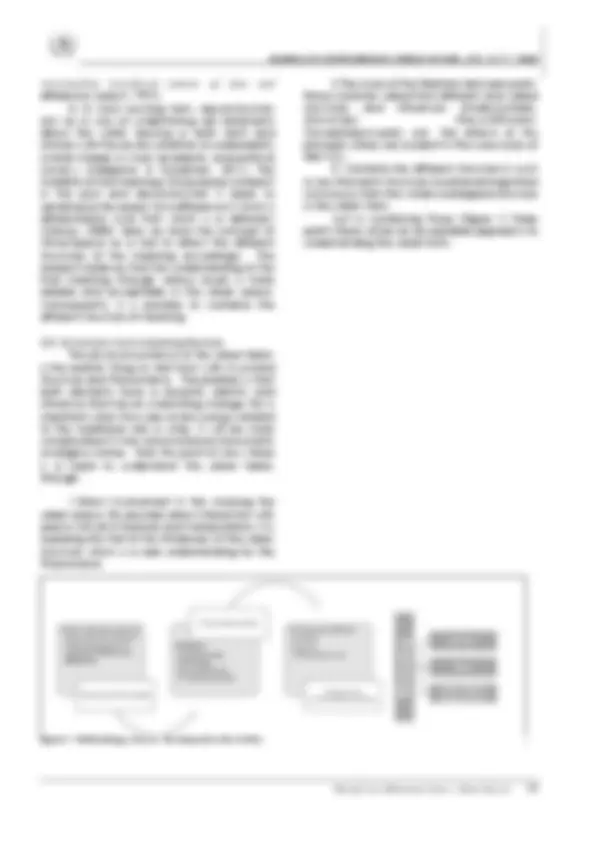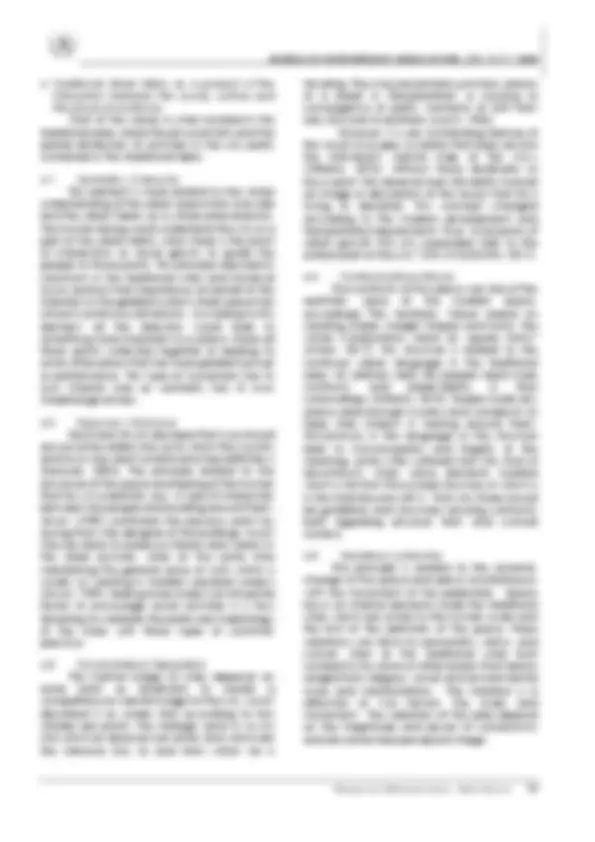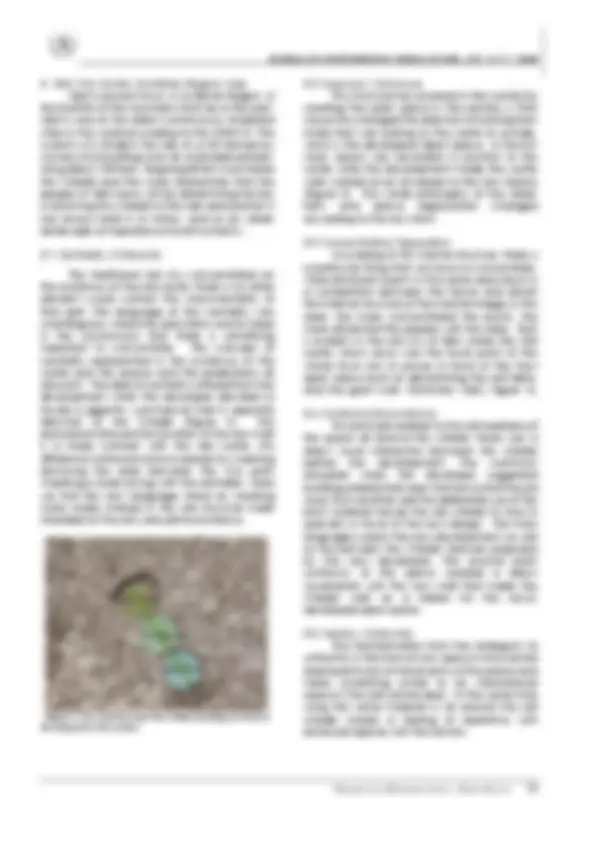





Study with the several resources on Docsity

Earn points by helping other students or get them with a premium plan


Prepare for your exams
Study with the several resources on Docsity

Earn points to download
Earn points by helping other students or get them with a premium plan
Community
Ask the community for help and clear up your study doubts
Discover the best universities in your country according to Docsity users
Free resources
Download our free guides on studying techniques, anxiety management strategies, and thesis advice from Docsity tutors
The relationship between traditional urban spaces and the interaction between society and architecture. The authors argue that traditional urban spaces are unique creations of prolonged societal engagement with architectural elements. However, the destruction of these relationships through urban development and the importation of incompatible layers can lead to a misunderstanding of the urban context. The paper uses examples from erbil, iraq, to illustrate this point and emphasizes the importance of understanding the urban fabric through direct involvement and continuity.
What you will learn
Typology: Essays (university)
1 / 7

This page cannot be seen from the preview
Don't miss anything!




2018 , Volume 2 , Number 2 , pages 71 – 77
(^1) Cihan University, Kurdistan, Iraq (^2) University of East Sarajevo, Bosnia and Herzegovina E mail: mustafaamen@gmail.com E mail: dusko.kuzovic@gmail.com
https://doi.org/10.25034/ijcua.2018. www.ijcua.com Copyright © 2017 Contemporary Urban Affairs. All rights reserved.
1. Introduction There are many ways for communication, but the Spaces is the interactive one. According to Lawson the very phrase ‘face to face’ is implicitly refers to space (Lawson, 2001). There is a hidden language between the different part of the societies, the urban space as a component of the urban fabric plays its role in that language as a Part of the whole, the part has a phenomenological dimension in addition to its relational structure with the system as a whole. Social science support that the “‘personal space’ and ‘human territoriality’ also tie space to the human agent, and do not acknowledge its existence independently of the human agent.
Article history: Received 2 August 2017 Accepted 11 December 2017 Available online 16 December 2017 Keywords: Urban Space; Traditional city; Prototypes; Context; Synchronic; Diachronic. This work is licensed under a Creative Commons Attribution - NonCommercial - NoDerivs 4.0. "CC-BY-NC-ND"
2. Communication through urban fabric Harold Proshansky said, «The physical environment that we construct is as much a social phenomenon» (Lawson, 2001). If any urban fabric has its internal system, then those «descriptions of space can be related both to the everyday buildings that make up the system and to the various» (HIillier & Hanson, 2009) kinds of public building that exist within the urban fabric. Space is medium for interaction understanding as well as understand the message behind the urban fabric. There are different layers of combinations to transfer the meaning or as a way of shifting the meaning. In another word, there is continuous changes and modifications in the fabric from diachronic point view. So, there is a need to understand the underlying structure which regulates the spaces within the entire urban fabric. For Space gets its meaning through its direct connections with human consciousness. 3. Society and Urban Fabrics binary interaction. 3.1 Introduction Both Space and Society have a particular structure which is modified and molded in almost complete compatibility with the other with all its intrinsic values. The understanding of the reality through a binary interaction and understand the meaning of the context, text, and urban fabric is a vast field, its root goes back to some other artistic field. In linguistics, Saussure insisted «that our ability to discern phonemic structures requires that we recognize units of meaning such that they are reiterable.» (Winters, 2007). Saussure did not consider it necessary to distinguish between a language where that consists in the mastery of concepts and grasping content on the one hand and investing insight with connotation on the other. 3.2 Structuralism binary interpretation. In its simplest form, structuralism is an analytical approach to consider phenomena as a complex system of variables operating under the certain universal rule. The urban space plays a significant role in understanding the essential meaning of any urban fabric. The undistinguishable world comprises of the structures that inspire and establish all of these phenomena is the underlying phenomena, which is «consists of the structures that underlie and organize all of these phenomena so that we can make sense of them.» (Tyson, 2006). The first one related to the physical world. Architecture and urban design are similar to the internal relationships between the different spaces and architectural masses to create some pattern or order or Deep Structure (HIillier & Hanson, 2009). Although the meaning has a structure, that meaning is not alone and related to different layers with a different period. As a result, there are different layers of structures that stacked above each other, the combination of those layers composes the final sign of the urban form 3.3 Phenomenological view Phenomenology role is to probe for the deeper structure of human reality and thereby to articulate the «language of metaphors that can be identified with our existence.» (HIillier & Hanson, 2009). Phenomenology further emphasizes the fact that architecture is first and foremost a multi-sensory experience as opposed to a purely visual or conceptual exercise. There is a focus on the human place «the structure of place becomes manifest as environmental totalities which comprise the aspects of character and space.» (Schulz, 1991). The theory focused on experiences and its interpretation by a human. It is crucial to get that the skills play a prominent role in understanding the space, but then what remains is how to transfer those feeling or experience accordingly. This method is well determined and identified for a single area where spectator could record his own experiences, but the question remained about the relationship of that space with the other related spaces! How could be so sure about the interconnection with other spaces? Although the phenomenological offer a useful tool to recognize places and its internal structures, it is suffering from indications that connect spaces with each other. It is worth to say that the Structuralists offer a better method for understanding the connection between the elements. 3.4 Post-Structuralism and Deconstructionism approach. The post-structuralism focused on time and Changing of the meaning accordingly there is no fixed connection between the signifiers and the signified or between the urban fabric or space as well as the context with interpretation being created by the subconscious or the spectator so it
4. Traditional Urban fabric as a product of the interaction between the social, culture and the physical existence. Most of the values in cities located in the traditional area where the physical form and the spatial distribution of activities in the city partly contained in the traditional fabric. 4.1 Centrality / Exteriority This element is more related to the whole understanding of the urban space from one side and the urban fabric as a whole phenomenon. The human being could understand the city or a part of the urban fabric when there is the point of interactions or social gravity to guide the people to those points. This principle reached its maximum in the traditional cities and historical towns and lost that importance on behalf of the Exteriority in the gridded system where space has a fluent continuous dimension. According to this element, all the direction could lead to something more important or a place where all these points collected together or leading to some other place that has more gradient power or performance. This type of movement has its own internal rules as centrality has its own morphological rules. 4.2 Exposure / Enclosure Raymond Unwin declared that «we should secure some orderly line up to which the country and town may each extend and stop definitely.» (Samuels, 2004). The principle related to the enclosure of the space and feeling of the human that he is in a definite way. A type of interaction between the people and building around them. Unwin (1909) confirmed the previous point by saying that « the designer of the buildings, much may be done to produce interest and variety in the street pictures, while at the same time maintaining the general sense of unity which is usually so wanting in modern suburban roads.» (Unwin, 1909). Feeling to be inside is an influential factor to encourage social activities it is thus tempting to correlate the particular morphology of the close with these types of common practice. 4.3 Concentration/ Separation The mental image of cities depends on some point as landmarks to create a comprehensive mental image for the city. Lynch described it as nodes that according to him «Nodes are points, the strategic spots in a city into which an observer can enter, and which are the intensive foci to and from which he is traveling. They may be primarily junctions, places of a break in Transportation, a crossing or convergence of paths, moments of shift from one structure to another» (Lynch, 1960). However, it is «an outstanding feature of the visual cityscape, a marker that helps anchor the individual’s mental map of the city.» (Williams, 2010). Without these landmarks or focus point, the observer loses the ability to build an image or description of the layout that he is trying to decipher. This concept changed according to the modern development and transportation requirements “Due to dynamic of urban growth the city expanded itself to the exterior part of the city” (NIA & SULEIMAN, 2017). 4.4 Continuity/Discontinuity The continuity of the space was one of the aesthetic value of the modern space, accordingly “The Aesthetic Values based on creating simple, straight Shapes and forms, the whole Compositions stand on square forms” (Amen, 20 17). This structure is related to the continues urban language in the traditional area, «In ordinary daily life people need more continuity and predictability in their surroundings» (Williams, 2010). People inside any space need enough mystery and complexity to keep their interest in looking around them. Discontinuity in the language or the structure lead to misconception and fragility of the meaning, some cities suffered from this kind of discontinuity when some elements inserted which is far from the existed structure or which is in the total discord with it. That why there should be guidelines and structures assuring continuity both regarding physical form and cultural context. 4.5 Variations/ uniformity The principle is related to the dynamic change of the space and place simultaneously with the movement of the pedestrian. Space focus on internal elements inside the traditional cities which are similar to the human scale and the limit of the definition of the space, these variations can drive by personality, status, and culture. Most of the traditional cities built compactly for some or other reason that reason ranged from religious, social and environmental issues and manifestations. The Variation is a reflection of two factors, the scale, and movement. The variations of the area depend on the magnitude and power of connectivity and disconnected perceptual image.
5. Erbil City Center /Kurdistan Region/ Iraq Abril is ancient town, in Kurdistan Region, in the foothills of the mountains that rise to the east. Abril is one of the oldest continuously inhabited cities in the world according to the UNESCO. The current city inhabits the top of a hill formed by consecutive building over an extended period), rising about 100 feet. Ongoing efforts to revitalize the Citadel and the close relationship that the people of Erbil have will be determining factors in returning the Citadel to the role and position it has always held in its history, and as an urban landscape of importance for all humanity. 5.1. Centrality / Exteriority The traditional old city concentrated on the existence of the old castle; there is no other element could contest the monumentality of that part, the language of the centrality was unambiguous where the spectator used to keep in the unconscious that there is something important to concentrate. The concept of centrality represented in the existence of the castle and the spaces and the pedestrians all around it. The idea of centrality suffered from the development when the developer decided to locate a gigantic commercial mall in opposite direction of the Citadel (Figure 2). The procedure followed the location of the new mall is a sharp contrast with the old castle, this difference enforced and increased by creating removing the area between the two ports Creating a sharp slicing with the old fabric. Here we find the new language stand on creating more nodes instead in the old structure node stranded on the only one prime existence. Figure 2. New Centers near the citadel pushing out Source Developed by the author. 5.2. Exposure / Enclosure This structure has reversed in the center by creating the open space in the primary is that cause the changed the direction of looking from inside that was looking to the castle to outside, which is the developed Open Space. In the first case, space was secondary in position to the castle while the development made the castle walls worked as an envelope to the new Space (Figure 3). The whole philosophy of the urban form and space organization changed according to the new term. 5.3. Concentration/ Separation According to this mental structure, there is a particular thing that we have to concentrate. More dominant points in the same area result in a competition between the forces and distort the internal structure of the mental images in the area; the more concentrated the points, the more distracted the people with the area. That is evident in the old city of Erbil where the Old castle which once was the focal point of the whole town lost its power in favor of the New open space built on demolishing the old fabric and the giant mall - Nishtiman Mall-( Figure 4). 5.4. Continuity/Discontinuity. This principle related to the atmosphere of the space all around the citadel, there was a direct visual interaction between the citadel before the development. The continuity disrupted when the developer suggested building a barrier between the fence and the old souq, from another side the deliberate use of the brick material forced the old citadel to lose its specialty in favor of the new design. The main languages used in the new development, as well as the between the Citadel, features proposed by the new developers. The second point continuity of the space created a direct visualization with the new mall that made the Citadel work as a barrier for the newly developed open space. 5.5. Variety / Uniformity The transformation from the ambiguity to uniformity in the form of new space in the central area lead to loss of the diversity of the space and make something similar to an international space in the old central area. At the same time using the same material in all around the old citadel create a feeling of repetitive with enforced rapture with the old skin.
Baghdad city suffered from the same differentiations and points. The approved design by the municipality focused on the negative space that decreases the dominance part of the shrine. That why any urban fabric should keep multi-layers of interpretation extracted from the diachronic period of city life that is the main point to start with to build a real image for cities that based on cultural and social activities. Acknowledgments This research did not receive any specific grant from funding agencies in the public, commercial, or non-for-profit sectors. References Amen, M. A. (2017, August). The inspiration of Bauhaus principles on the modern housing in Cyprus. Journal of Contemporary Urban Affairs, 1(2), p. 21 - 32. https://doi.org/10.25034/ijcua.2017. HIillier, B., & Hanson, J. (2009). The Social Logic of Space. Cambridge University Press. https://www.cambridge.org/core/books/soci al-logic-of space/6B0A078C79A74F0CC615ACD8B250A 985 Lawson, B. (2001). The Language of Space. Architectural Press. https://www.amazon.co.uk/Language- Space-Bryan-Lawson/dp/ Leach, N. (1997). Rethinking Architecture. Routledge. https://designpracticesandparadigms.files.w ordpress.com/2013/01/leach-ed-rethinking- architecture.pdf Lynch, K. (1960). The Image of The City. Cambridge, MA: The MIT Press. http://www.miguelangelmartinez.net/IMG/p df/1960_Kevin_Lynch_The_Image_of_The_City _book.pdf Mallgrave , H. F., & Goodman, D. (2011). An Introduction to Architectural Theory 1968 to the Present. Wiley-Blackwel. https://www.wiley.com/en- us/An+Introduction+to+Architectural+Theory %3A+1968+to+the+Present-p- 9781405180634 Massey, D. (2008). Doreen Massey: For Space. SAGE Publications Ltd. https://selforganizedseminar.files.wordpress.c om/2011/07/massey-for_space.pdf NIA, H. A., & SULEIMAN, Y. H. (2017, August). Identity in Changing Context: Factors of losing Identity in new developed part of the city of Famagusta, North Cyprus. Journal of Contemporary Urban Affairs., 1(2), 11 - 20. https://doi.org/10.25034/ijcua.2018. Samuels, I. (2004). Urban forms the death and life of the urban block. Architectural Press. https://www.amazon.co.uk/Urban-Forms- Death-Life-Block/dp/ Schulz, C. N. (1991). Genius Loci: Toward a phenomenological view in Architecture. Rizzoli. http://home.fa.utl.pt/~al7531/pedidos/livros/ Genius%20Loci%20Towards%20a%20Phenom enology%20of%20Architecture.pdf Tyson, L. (2006). Critical theory today: a user- friendly guide. New York: Routledge. https://www.amazon.com/Critical-Theory- Today-User-Friendly-Guide/dp/ Unwin, S. (1909). Town Planning in Practice: An Introduction to the Art of Designing Cities and Suburbs. :. New York: Charles Scribner & Sons. https://trove.nla.gov.au/work/ Williams, J. (2010). Understanding post- structuralism. New York: Acumen. https://www.amazon.com/Understanding- Poststructuralism-Movements-Modern- Thought/dp/ Winters, E. (2007). Aesthetics and Architecture. Continuum International Group. New York: Routledge. https://www.google.com/url?sa=t&rct=j&q= &esrc=s&source=web&cd=1&cad=rja&uact= 8&ved=2ahUKEwiE2IWCha_fAhWvtYsKHQ42C 5wQFjAAegQIDBAC&url=http%3A%2F%2Faest hetics.ff.cuni.cz%2Ffile_download%2F21&usg =AOvVaw1YfZc9VP2nsz64GSpkI_ZX